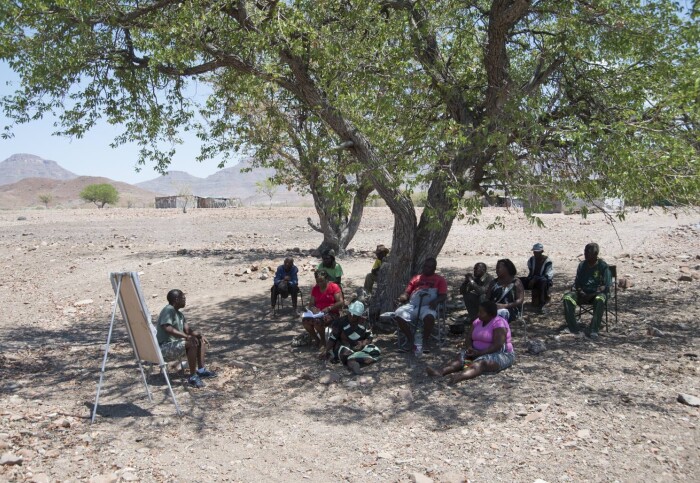How conservation spreads can be forecast decades ahead

Community Conservancies in Namibia. Credit: NACSO/WWF Namibia
A new model for forecasting how conservation initiatives will spread can help guide local to global policies.
Relatively basic models based on disease spread can accurately forecast the uptake of conservation programmes among individuals, communities, and countries years ahead of time, according to new research from the Catalyzing Conservation group at Imperial College London.
Our next step is to get our model into the hands of decision-makers. Dr Matt Clark
The trajectory a programme is likely to take – from failure to launch to widespread adoption – can be forecasted from just a handful of years of initial data, which the team say could help practitioners track their progress and adjust accordingly.
They are now working on a web tool that will help practitioners do just this. Lead author Dr Matt Clark, from the Centre for Environmental Policy at Imperial, said: “Our next step is to get our model into the hands of decision-makers. Forecasting the long-term uptake of conservation programmes can enable iterative and adaptive decisions for implementing conservation at the necessary scales.”
The research is published today in the journal One Earth.
Shaping spread
Conservation initiatives that require local buy-in, such as areas of forest or coastline protection, often spread from pilot projects to neighbouring communities. They do not all spread in the same way however, and many stall.
Previously, the Catalyzing Conservation group studied 22 conservation programmes from around the world, finding successful spread followed one of two trajectories – a ‘slow-fast-slow’ model, or S-shaped curve, where uptake is initially slow, accelerated, and then levels off; or a ‘fast-slow’ model, or r-shaped curve, where uptake is initially rapid then levels off.
Now, they have analysed these patterns further to see what drives them, and whether the early years of a project can be used to forecast the future success – or failure – of the programme.

Using concepts from epidemiology (the spread of disease) they discovered that the S- and r-shaped curves are driven by two key social concepts.
S-shaped spread is mostly driven by ‘social learning’ – when people see their neighbours or peers doing something and take it up as a result.
r-shaped spread is instead controlled by independent learning – when each person has access to the same information and opportunity to take up the initiative at the same time, such as arising for a change in policy, so they don’t rely on peers to influence them.
Looking again at 19 of the global examples, the team were able to accurately forecast the patterns of adoption across most of the programmes by looking at the first half of the timeline and mathematically estimating the degree to which it is r-shaped or S-shaped and projecting the shape into the future.
Adapting decisions
There are many external factors that may influence the trajectory of a conservation programme – such as a single, sudden injection of cash – so the team see the model’s use as an ‘adaptive management tool’.
Dr Clark said: “Say a conservation initiative is spreading slowly at the beginning, it's really difficult to know how slow is too slow? Or how fast is too fast – is the budget being spread too thin? In order for managers to make decisions over something like a 40-year project, it's really important for them to be able to know if they’re on track and to know the mechanism(s) of spread – social or independent learning.
“It’s a method that's not necessarily best used for strict prediction, but more ‘this is what the forecast says, how might we tailor our decisions based on the information that we have?’”
The team are now working on a web tool with researchers in the Dyson School of Design Engineering at Imperial, to bring these insights to conservation practitioners worldwide. The tool will help estimate the number of potential adopters of conservation initiatives and, if the programme is off track, can suggest reasons why – such as needing to make a programme more observable so that people or communities might learn from their peers.
-
‘Forecasting Adoption with Epidemiological Models can Enable Adaptively Scaling Out Conservation’ by Matt Clark et al. is published in One Earth.
Article text (excluding photos or graphics) © Imperial College London.
Photos and graphics subject to third party copyright used with permission or © Imperial College London.
Reporter
Press Office
Communications and Public Affairs
- Email: press.office@imperial.ac.uk
